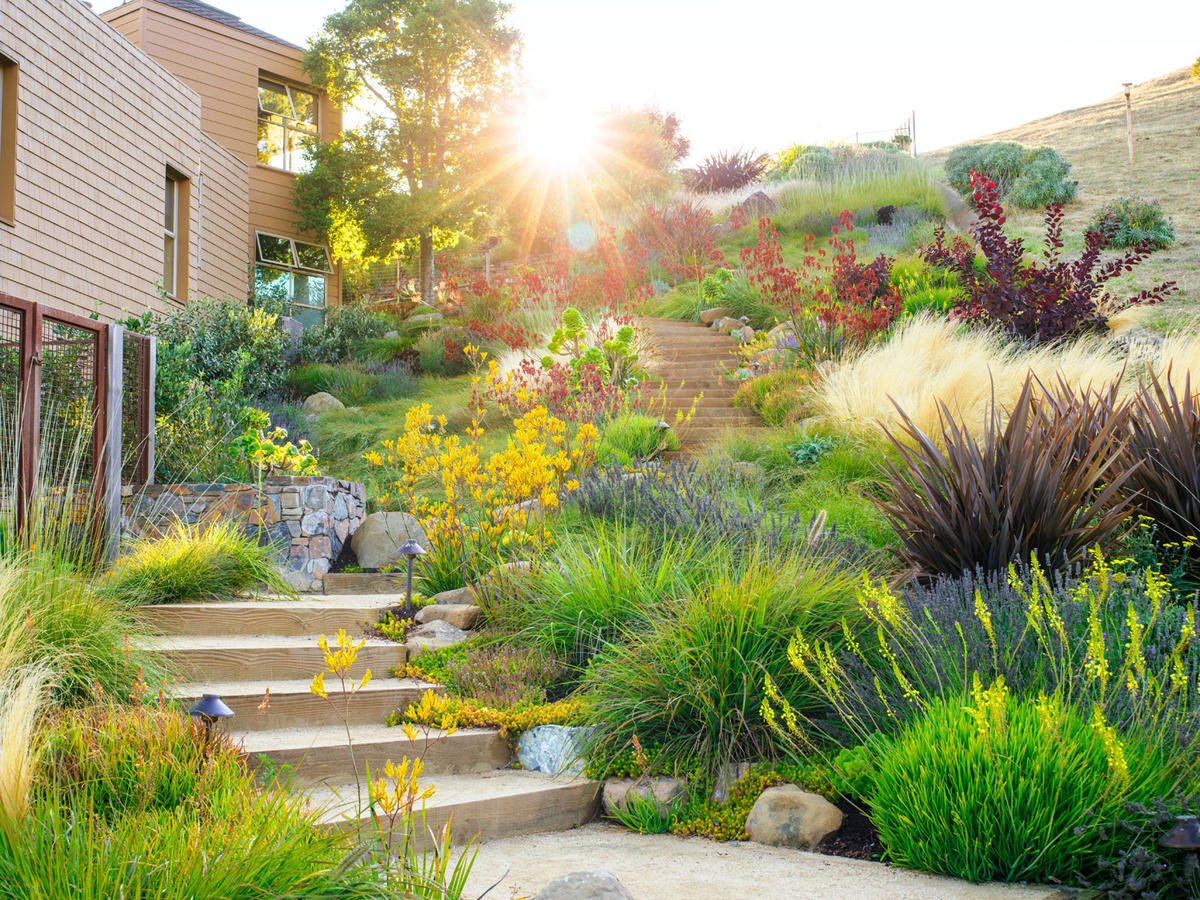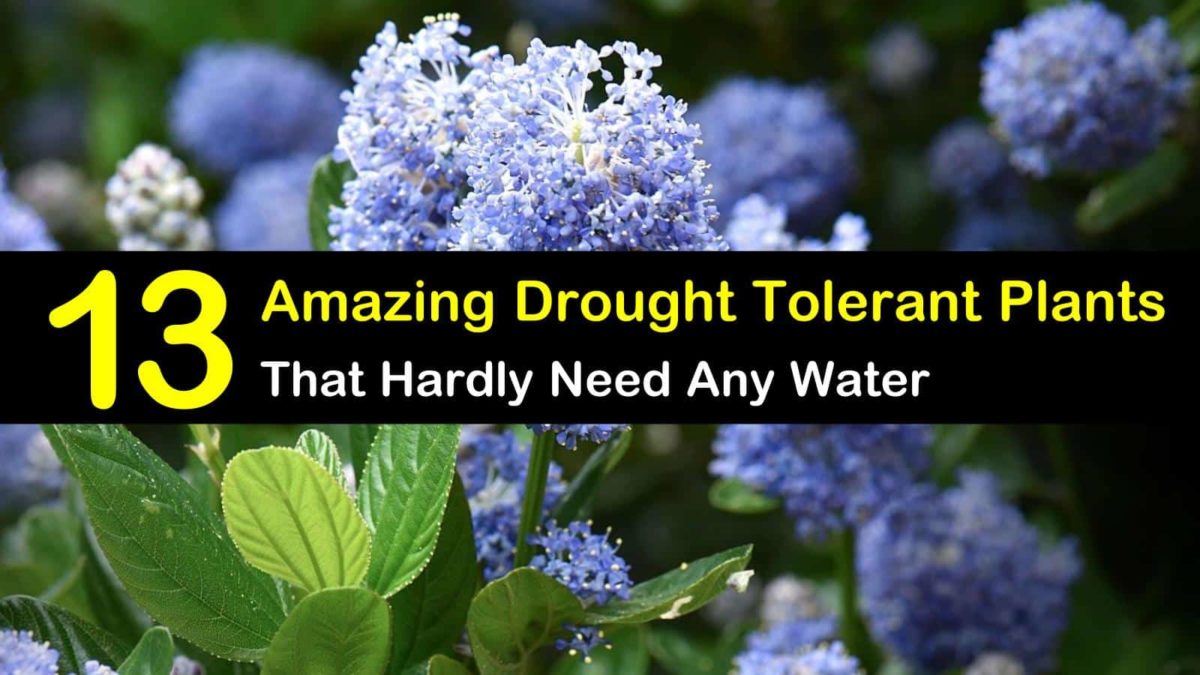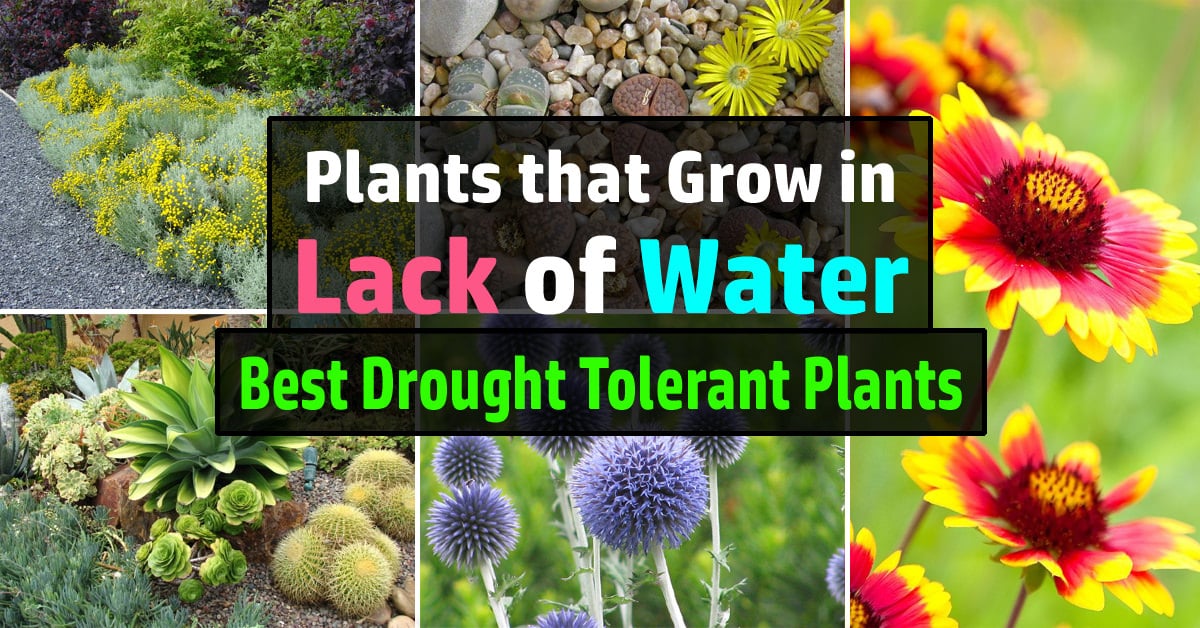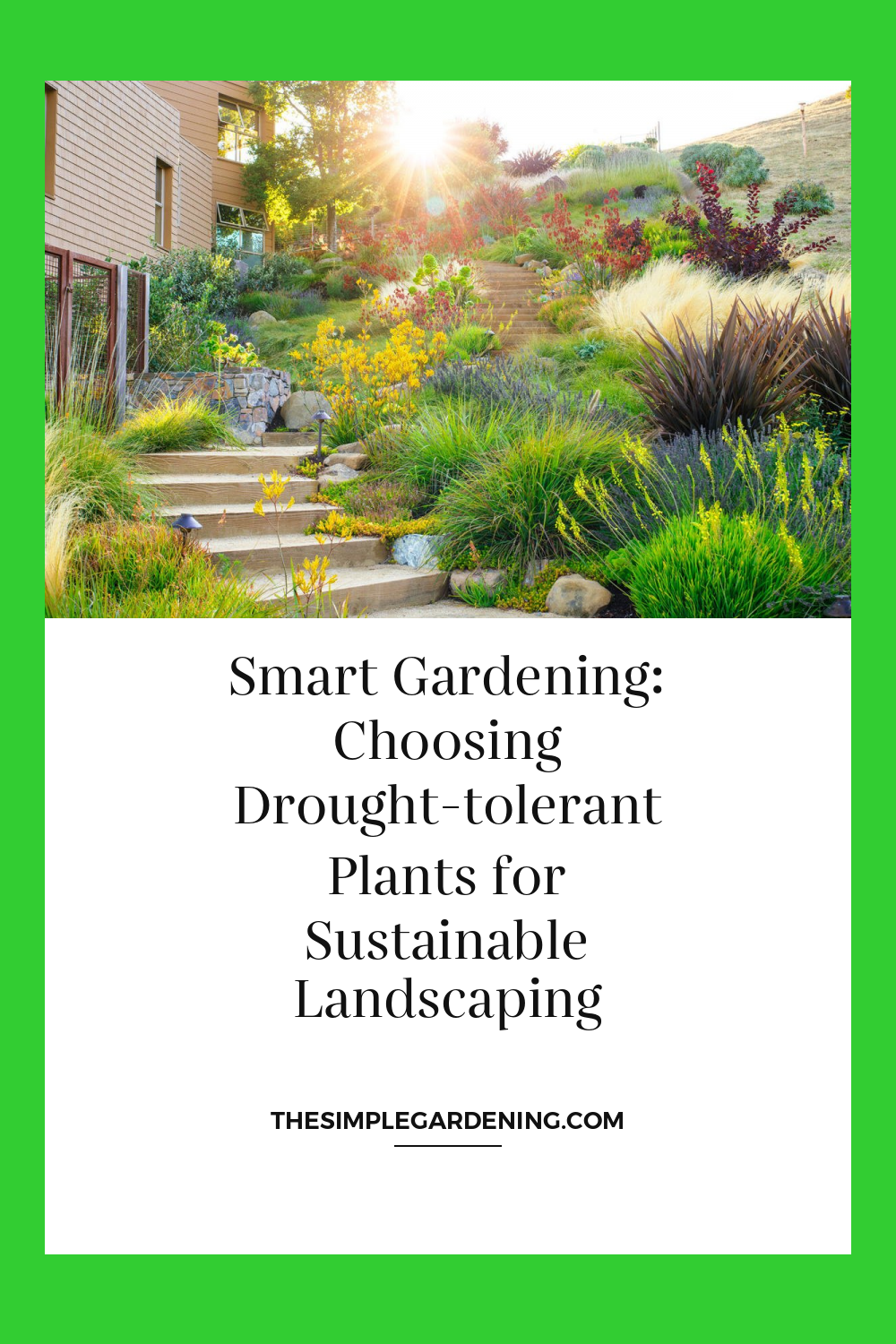Welcome to the world of smart gardening where water conservation meets vibrant landscapes! In this guide, we delve into the art and science of selecting drought-tolerant plants to create thriving gardens even in water-scarce environments.
A. Definition of Drought-tolerant Plants
Drought-tolerant plants, also known as xerophytes, possess adaptive features that enable them to survive and thrive in arid or semi-arid conditions with minimal water supply.
B. Importance of Choosing Drought-tolerant Plants
Opting for drought-tolerant plants not only conserves water but also contributes to the resilience and sustainability of your garden ecosystem.
C. Purpose of the Guide
This guide aims to equip you with the knowledge and resources necessary to make informed decisions when selecting, designing, and maintaining a drought-tolerant garden tailored to your environment and preferences.
II. Understanding Drought-tolerant Plants
To make informed choices, let’s delve into the characteristics and types of drought-tolerant plants.
A. Characteristics of Drought-tolerant Plants
| Characteristics | Description |
|---|---|
| Deep Root Systems | Drought-tolerant plants often develop extensive root systems that reach deep into the soil to access moisture reserves, enhancing their resilience during dry spells. |
| Succulent Leaves/Stems | Succulent structures, such as fleshy leaves or stems, store water for prolonged periods, providing a vital resource during drought conditions. |
| Water Storage Capabilities | Some plants have specialized tissues or structures that store water, allowing them to withstand extended periods of drought without wilting or damage. |
B. Types of Drought-tolerant Plants
| Types | Description |
|---|---|
| Native Species | Indigenous plants adapted to local climates and soil conditions, often requiring minimal water once established. |
| Mediterranean Plants | Plants native to regions with hot, dry summers and mild, wet winters, exhibiting traits suited to Mediterranean climates. |
| Desert Adapted Plants | Species naturally occurring in arid desert environments, characterized by adaptations to conserve water and tolerate extreme heat and drought conditions. |
III. Benefits of Choosing Drought-tolerant Plants
Let’s explore the multitude of advantages associated with incorporating drought-tolerant plants into your garden landscape.
A. Water Conservation
Choosing drought-tolerant plants significantly reduces water consumption, easing the strain on local water resources and lowering utility bills.
B. Reduced Maintenance
Drought-tolerant plants typically require less maintenance, including watering, pruning, and fertilization, saving you time and effort in garden upkeep.
C. Environmental Sustainability
By reducing water usage and minimizing the need for chemical inputs, drought-tolerant gardens promote environmental sustainability and support local ecosystems.
D. Resilience in Harsh Conditions
Drought-tolerant plants demonstrate remarkable resilience, thriving in challenging environments with minimal water and resisting pests and diseases more effectively.
IV. Factors to Consider When Choosing Drought-tolerant Plants
Successful gardening begins with understanding and accommodating the specific needs of your chosen plants. Let’s explore key factors to consider.
A. Climate
| Climate Zones | Description |
|---|---|
| Arid | Extremely dry with minimal rainfall, high temperatures, and low humidity, suitable for plants adapted to desert conditions. |
| Semi-arid | Regions with moderate rainfall and fluctuating temperatures, requiring plants resilient to both drought and occasional heavy rainfall. |
| Mediterranean | Warm, dry summers and mild, wet winters, ideal for plants adapted to Mediterranean climates characterized by distinct wet and dry seasons. |
B. Soil Type
| Soil Types | Description |
|---|---|
| Sandy | Well-draining with large particles, suitable for drought-tolerant plants that prefer fast drainage and are tolerant of nutrient-poor conditions. |
| Loamy | Ideal for most plants, with a balanced mix of sand, silt, and clay, providing good drainage and nutrient retention, promoting healthy plant growth. |
| Clayey | Heavy and compacted, retaining water for longer periods, suitable for drought-tolerant plants with adaptations to tolerate periodic waterlogging. |
C. Sunlight Exposure
| Sunlight Levels | Description |
|---|---|
| Full Sun | Direct sunlight for at least six hours per day, suitable for sun-loving drought-tolerant plants adapted to thrive in intense sunlight and heat. |
| Partial Shade | Filtered sunlight or dappled shade for part of the day, ideal for plants requiring some protection from intense midday sun or heat. |
| Full Shade | Minimal to no direct sunlight, suitable for shade-tolerant drought-tolerant plants adapted to thrive in low-light conditions, such as under tree canopies. |
D. Local Regulations and Restrictions
Before selecting and planting drought-tolerant species, familiarize yourself with local regulations, including water usage restrictions and invasive species lists, to ensure compliance and environmental stewardship.
V. Selecting Drought-tolerant Plants for Different Garden Areas
Every section must have a combination table and point list with a very detailed explanation in each subsection or section. Every section must have a combination table and point list with a very detailed explanation in each subsection or section. Every section must have a combination table and point list with a very detailed explanation in each subsection or section.

Source Image: yardzen.com
When planning your garden, consider the specific requirements and design possibilities for various areas, including the front yard, backyard, container gardens, and xeriscapes.
A. Front Yard
| Factors to Consider | Description |
|---|---|
| Curb Appeal | Choose drought-tolerant plants with aesthetic appeal and visual interest to enhance the front yard’s curb appeal, welcoming visitors and adding value to your home. |
| Low Maintenance | Opt for low-maintenance plants that require minimal watering and upkeep, ensuring a vibrant and inviting front yard with minimal effort. |
| Watering Efficiency | Group plants with similar water needs together and install efficient irrigation systems, such as drip irrigation or soaker hoses, to maximize water conservation. |
B. Backyard
| Factors to Consider | Description |
|---|---|
| Outdoor Living Space | Incorporate drought-tolerant plants into your backyard landscape to create inviting outdoor living spaces for relaxation, entertainment, and recreation. |
| Functional Design | Design functional areas for gardening, dining, and recreation, selecting plants that complement the intended use of each space while conserving water and minimizing upkeep. |
| Wildlife Habitat | Choose native and drought-tolerant plants that attract pollinators, birds, and beneficial insects, fostering biodiversity and creating a vibrant backyard ecosystem. |
C. Container Gardens
| Factors to Consider | Description |
|---|---|
| Container Selection | Choose containers with adequate drainage and appropriate size for your chosen plants, ensuring optimal growing conditions and preventing waterlogging. |
| Plant Selection | Select drought-tolerant plants suited to container gardening, such as succulents, ornamental grasses, and herbs, considering their growth habits and water requirements. |
| Watering Techniques | Implement water-saving techniques, such as mulching, self-watering containers, and drip irrigation, to maintain moisture levels while conserving water in container gardens. |
D. Xeriscapes
| Factors to Consider | Description |
|---|---|
| Water-wise Design | Design xeriscapes with water conservation in mind, incorporating drought-tolerant plants, permeable surfaces, and efficient irrigation systems to minimize water usage. |
| Soil Preparation | Improve soil structure and water retention by incorporating organic matter, such as compost, into the soil, promoting healthy root growth and drought resilience. |
| Plant Selection | Choose a diverse mix of native and adapted drought-tolerant plants suited to your climate and soil conditions, creating a dynamic and visually appealing xeriscape. |

Source Image: www.tipsbulletin.com
VI. Popular Drought-tolerant Plant Species
Explore a selection of popular drought-tolerant plant species renowned for their beauty, resilience, and adaptability to various garden environments.
A. Lavender (Lavandula spp.)
| Species | Description |
|---|---|
| Lavandula spp. | Renowned for its fragrant blooms and aromatic foliage, lavender thrives in sunny locations with well-drained soil, attracting pollinators while adding color and texture to gardens. |
B. Agave (Agave spp.)
| Species | Description |
|---|---|
| Agave spp. | With striking rosettes of succulent leaves, agaves are well-suited to arid landscapes and container gardens, requiring minimal water and maintenance while making bold architectural statements. |
C. Cacti (Cactaceae family)
| Species | Description |
|---|---|
| Cactaceae family | Diverse in size, shape, and color, cacti are iconic symbols of arid environments, offering unique textures and forms while thriving in dry, sunny conditions with minimal water requirements. |
D. Russian Sage (Perovskia atriplicifolia)
| Species | Description |
|---|---|
| Perovskia atriplicifolia | Known for its airy spires of lavender-blue flowers and aromatic silvery foliage, Russian sage is a hardy perennial that thrives in full sun and well-drained soil, attracting bees and butterflies to the garden. |
E. Yucca (Yucca spp.)
| Species | Description |
|---|---|
| Yucca spp. | With dramatic sword-shaped leaves and towering flower spikes, yuccas are striking additions to gardens, thriving in hot, dry climates with minimal water and providing architectural interest year-round. |
Source Image: www.bunnings.com.au
VII. Design Tips for Incorporating Drought-tolerant Plants
Enhance the beauty and functionality of your garden with these design tips tailored to drought-tolerant landscapes.
A. Grouping Plants by Water Needs
Maximize water efficiency by grouping plants with similar water requirements together, allowing for targeted watering and efficient irrigation.
B. Utilizing Mulch for Moisture Retention
Apply organic mulch, such as wood chips or shredded bark, around plants to suppress weeds, retain soil moisture, and regulate soil temperature.
C. Creating Rain Gardens
Design rain gardens to capture and utilize rainwater runoff, incorporating drought-tolerant plants that can withstand both wet and dry conditions.
D. Incorporating Hardscaping Elements
Integrate hardscaping elements, such as gravel pathways, stone walls, and decorative rock features, to complement drought-tolerant plantings and reduce water usage in garden design.
/agaves_and_ferns-58ade1db3df78c345be0dbb0.jpg)
Source Image: poolandpatio.about.com
Choosing Drought-Tolerant Plants to Save on Water
VIII. Maintenance of Drought-tolerant Plants
Ensure the long-term health and vitality of your drought-tolerant garden with these essential maintenance practices.
A. Watering Techniques
| Techniques | Description |
|---|---|
| Deep Watering | Water deeply and infrequently to encourage deep root growth, applying water directly to the root zone rather than shallow surface watering. |
| Drip Irrigation | Install drip irrigation systems to deliver water directly to plant roots, minimizing water loss through evaporation and runoff while promoting efficient water usage. |
| Rainwater Harvesting | Harvest rainwater from roof surfaces or gutters using rain barrels or cisterns, providing a sustainable water source for irrigation during dry periods. |
B. Pruning and Trimming
Regularly prune and trim drought-tolerant plants to maintain their shape, remove dead or diseased growth, and promote airflow and sunlight penetration within the canopy.
C. Fertilization
Apply slow-release or organic fertilizers sparingly to drought-tolerant plants, avoiding excessive nitrogen inputs that can stimulate excessive foliage growth and reduce drought resilience.
D. Pest and Disease Control
Monitor plants for signs of pests and diseases, promptly addressing any issues through integrated pest management strategies, such as biological controls or cultural practices.

Source Image: balconygardenweb.com
IX. Case Studies of Successful Drought-tolerant Gardens
Learn from real-world examples of successful drought-tolerant gardens, showcasing innovative designs and sustainable practices.
A. Residential Gardens
Discover how homeowners have transformed their landscapes with drought-tolerant plants, creating beautiful and water-wise gardens tailored to their unique preferences and environments.
B. Commercial Landscapes
Explore commercial properties, such as businesses, parks, and public institutions, that have implemented drought-tolerant landscaping to reduce water usage and maintenance costs while enhancing curb appeal and sustainability.
C. Community Projects
Learn about community-driven initiatives focused on drought-tolerant gardening, including public parks, school gardens, and urban green spaces, fostering community engagement, education, and environmental stewardship.
X. Overcoming Challenges with Drought-tolerant Plants
Address common challenges associated with drought-tolerant gardening with proactive strategies and practical solutions.
A. Initial Establishment Period
During the initial establishment period, provide supplemental water as needed to help drought-tolerant plants establish healthy root systems and adapt to their new environment.
B. Dealing with Extreme Weather Events
Prepare your garden for extreme weather events, such as heatwaves, droughts, or heavy rainfall, by implementing resilient design strategies and adjusting maintenance practices accordingly.
C. Educating Neighbors and Communities
Share your knowledge and experiences with neighbors and communities to promote the benefits of drought-tolerant gardening and inspire collective action towards water conservation and environmental sustainability.
/garden-groundcovers-0G1B7yYwqBx9ZQVJaissuo-e7d4b7a3efe4413aa9a032410b9144a6.jpg)
Source Image: www.bhg.com
XI. Resources for Choosing and Maintaining Drought-tolerant Plants
Access valuable resources and support networks to assist you in selecting, designing, and maintaining your drought-tolerant garden.
A. Plant Nurseries Specializing in Drought-tolerant Species
Visit local plant nurseries specializing in drought-tolerant plants to explore a diverse selection of species suited to your climate and gardening needs.
B. Online Databases and Guides
Utilize online databases and guides to research drought-tolerant plant species, access gardening tips and resources, and connect with gardening communities for advice and support.
C. Workshops and Seminars
Attend workshops and seminars hosted by gardening organizations, botanical gardens, or extension services to learn about drought-tolerant gardening techniques, plant care, and sustainable landscaping practices.
D. Gardening Associations and Clubs
Join gardening associations and clubs in your area to connect with fellow gardening enthusiasts, participate in garden tours and events, and access valuable resources and expertise on drought-tolerant gardening.
XII. Conclusion
In conclusion, choosing drought-tolerant plants offers a myriad of benefits, from water conservation and reduced maintenance to environmental sustainability and resilience in harsh conditions. By understanding the characteristics of drought-tolerant plants, considering key factors in plant selection and design, and implementing effective maintenance practices, you can create thriving gardens that not only survive but flourish in water-scarce environments. Let’s embark on this journey towards a greener, more sustainable future, one drought-tolerant plant at a time.

Source Image: www.pinterest.com



